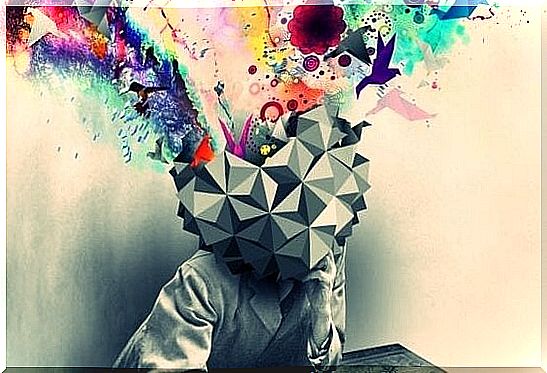Treating Depression With Gestalt Therapy: 4 Key Points

Treating depression with Gestalt therapy is both an interesting and useful strategy. For example, it helps us to put our reality in order in a creative way. In addition, we can resolve emotional blockages so that we can better understand ourselves and everything around us. All this is done in a more valid and secure way.
We’re talking about a kind of approach that has yet to find its way into the clinical world. However, the effectiveness is there and it is worth taking a closer look at this branch of psychology. The central point of departure is the idea that people are always in a constant state of transformation.
With this change it is normal that conflicts, imbalances and tensions arise. In the constant interaction between our bodies and everything around us, there are often pieces that don’t fit and that disturb the balance between ourselves and the “everything” around us.
Depression is without a doubt one of the most common problems (or imbalances). In addition, according to Gestalt therapy, depression disorders arise when there is a blockage. They also arise when our reality is no longer harmonious and we lose the capacity to connect with ourselves and our needs.
Treating Depression With Gestalt Therapy
However, it remains clear that each psychological approach and each branch of therapy has its own specific way of coping with disease. Still, it’s worth emphasizing that treating depression with Gestalt therapy is very effective. We can work on these kinds of blockages and at the same time improve our self-realization. The following four key points provide a better understanding of this approach.

1. Treating Depression With Gestalt Therapy Using Expressive Techniques
The expressive techniques of Gestalt therapy accomplish something very specific. They bring out our inner tensions. In addition, they channel the energy that is the cause of our conflicts. Little by little, they define the roots of our problems.
- We must not forget that, according to this approach, depression is an adverse experience for the human being who excludes and isolates us. We are so focused on ourselves that we only accumulate negative energy. Feeding ourselves exclusively on this stream of negative feelings and thoughts fragments us even more…
It is therefore necessary to express what is within us , to get in touch with our emotions and let them go, to release them into the light.
2. Suppressive Techniques
When treating depression with Gestalt therapy, it is very helpful to have the patient adopt a “suppressive” approach. So what do we actually mean by an oppressive technique? As the word suggests, we are going to eliminate something. Something that stands in the way of harmony with everything around us. In addition, we eliminate the blockages for a healthy union with our inner being.
- We should therefore suppress, control and manage all thoughts and dynamics that take us out of the present, the here and now.
- Instead of being immersed in a useless stream of worry that leads nowhere, we should allow ourselves to “experience” the present moment. We have to take in every second with an open mind.
- We also need to break free from the inner sermon that talks about ‘should’, ‘maybe’, ‘maybe’ and ‘what could happen’. All this distances us from the here and now.

3. Integration Techniques
In the gestalt, experiencing depression implies a personal defragmentation. Our reality has fallen apart and we are no longer connected to our inner needs. We can no longer identify with the context in which we find ourselves. Gestalt therapy seeks to improve integration between ourselves and our environment. That is, the balance that is currently gone. Integration techniques have this goal and two strategies are tried to achieve this:
- Interpersonal meeting. This encourages competent and effective dialogue. An exchange in which we can become aware of certain elements and circumstances. For example: “ I am worth nothing ” ⇔ what concrete facts have led me to come to this conclusion?
- Assimilation of projections. For example: “I think all my colleagues hate me” ⇔ projection ⇔ Now put yourself in your colleagues and imagine that you are all of them. What concrete and logical reasons do they have for hating you?
It is important to note that this process between the therapist and the patient can achieve great results as long as awareness occurs. This is the step where the person realizes and becomes aware of his thoughts, feelings and what is happening inside.
4. Creative Customization
Gestalt’s therapeutic work does not just try to free us from our blocks or solve unresolved problems. These can sometimes break the balance with the totality of who we are. What the therapist is trying to achieve for us is a feeling of freedom and creativity. We can apply these when we are faced with daily problems.
Treating depression with Gestalt therapy is not enough to cure or overcome depression. We must learn from this process through creative adaptation. We can extract something new from it, a reinforcing impulse from which we can obtain new resources and capacities. It allows us to create a richer, more desirable, and naturally happier present.

As Fritz Perls himself said, creative adaptation is a transformational impulse. An impulse that allows us to keep going, feeling reborn, stronger and more capable. Finally, there is something we should not forget. On the road to restoring our inner balance and perfect harmony with everything around us, it is necessary to integrate new capacities. Only in this way can we fly along on the journey of life with great resilience.









